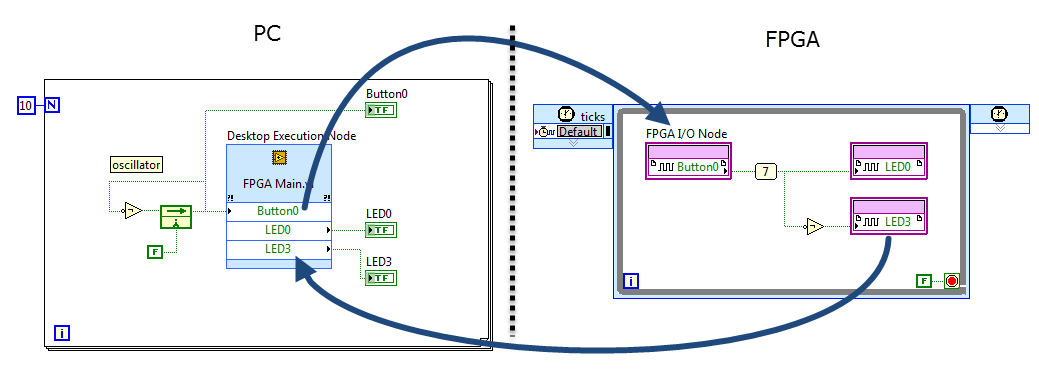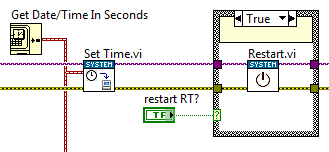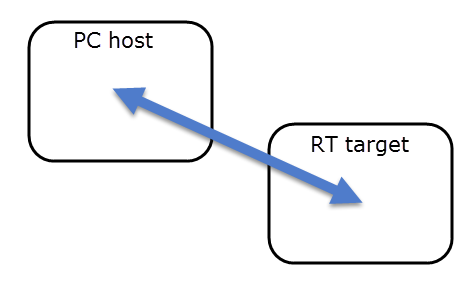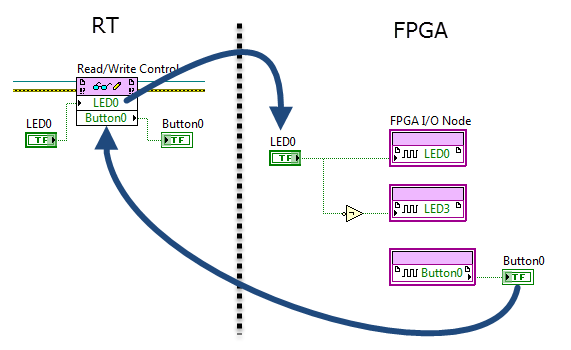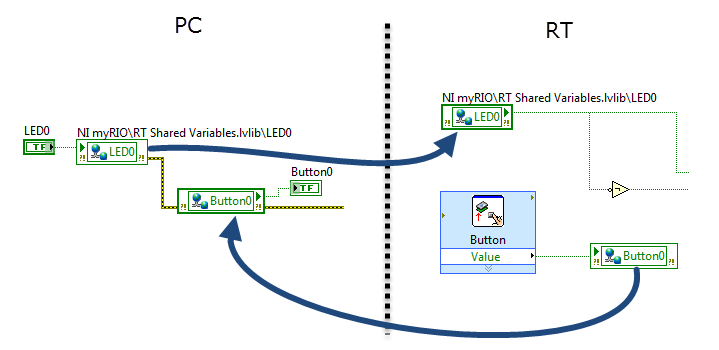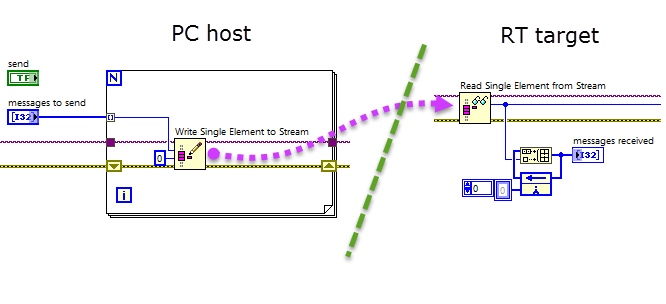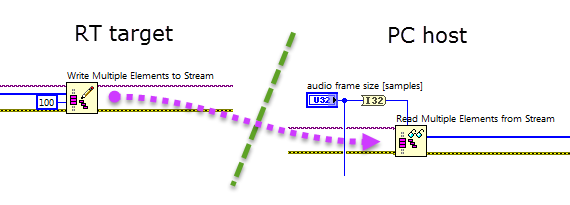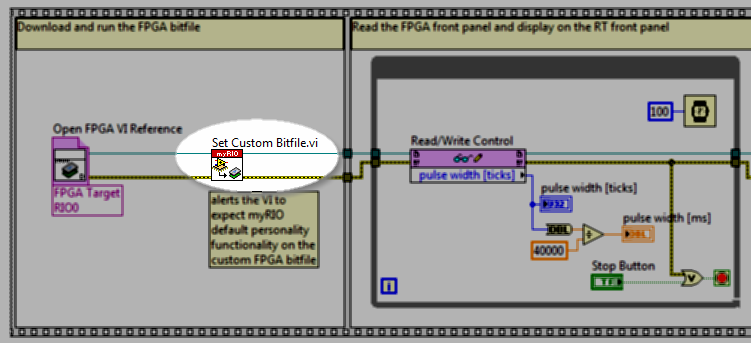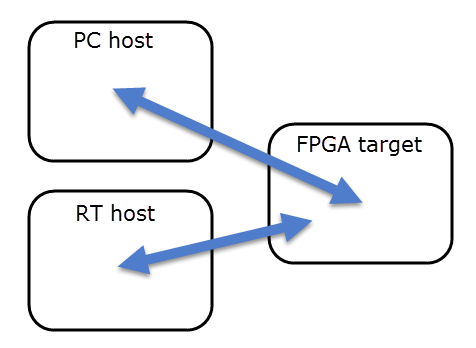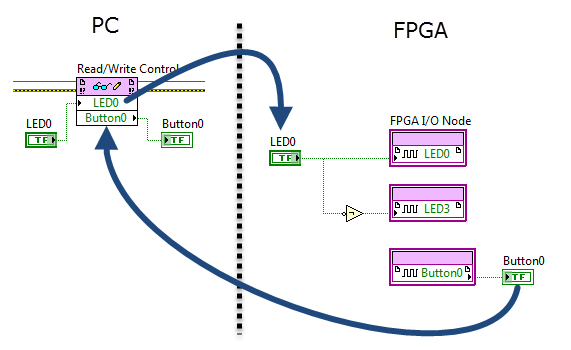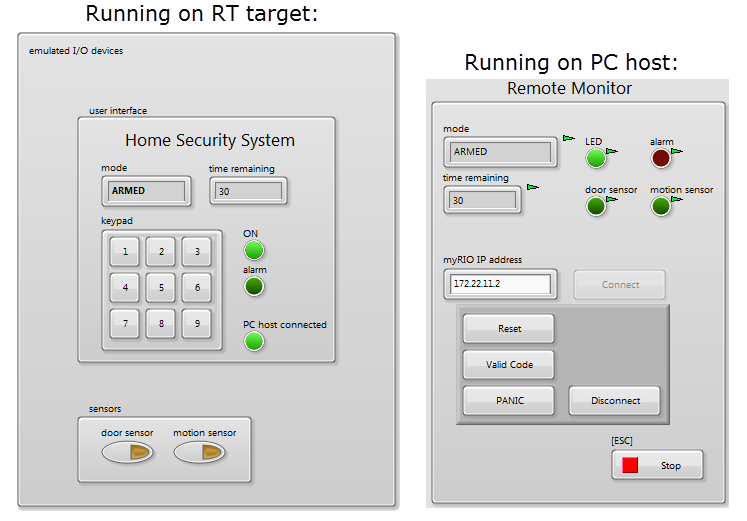"Inter-target" communication
"Desktop Execution" node as an FPGA VI testbench
FPGA code PC code
Set RT system time/date from PC
RT code PC code
RT/host inter-target communication
RT guide PC guide
Programmatic front-panel communication with RT
FPGA code RT code
Create a network-published shared variable (NPSV)
RT procedure PC procedure
Bind a PC VI front-panel indicator to a network-published shared variable (NPSV)
RT procedure PC procedure
Network-published shared variable (NPSV)
RT code PC code
Send messages through a network stream channel
RT code PC code
Stream high-speed data through a network stream channel
RT code PC code
Stream high-speed data between FPGA and RT with a DMA FIFO
FPGA code RT code
Augmented default Academic RIO Device FPGA personality and high-precision waveform measurement application example
FPGA code RT code
FPGA/RT and FPGA/host inter-target communication
FPGA guide RT guide PC guide
Programmatic front-panel communication with PC
FPGA code PC code
Stream high-speed data between FPGA and PC with a DMA FIFO
FPGA code PC code
System controller application example: Home Security System
RT code PC code
